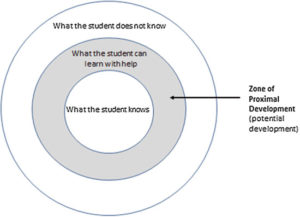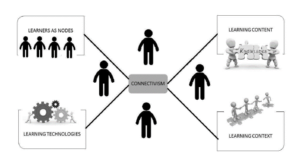2 Philosophies and Pedagogies
Constructivism
Educational psychologists such as Bruner and Piaget believed that learning occurs when an independent and conscious learner creates and codifies their own interpretation of the world, experiences and information. By engaging in problem solving activities, the learner builds upon foundational knowledge in a subjective way that results in increasingly sophisticated levels of cognitive ability (Bates, 2015; Ng, 2015; Sibley & Ostafichuk, 2015).
TBL exposes learners to real-life challenges and problems and compels them to interpret information and construct learning through discovery.
Social constructivism

Vygotsky took the isolationist view of constructivism and couched the philosophy in a social context. In social constructivism, learners still build their own interpretation of knowledge and application through exposure to problems, but they do so alongside other learners who influence the process through cultural and societal factors. Vygotsky felt that an individual in a silo could attain only so much learning, but that a group of individuals could support each other in reaching beyond the cognitive “zone” of what each already knows, into a zone of potential or proximal development (Ng, 2015; Sibley & Ostafichuk, 2015).
By its very foundations, TBL exposes individuals within teams (groups) to application based problems. As these active learning strategies support construction of knowledge in the individual’s mind, the individuals simultaneously help to grow the zone of proximal development for others.
Connectivism

Connectivism, as the name implies, is about learner developing connections to knowledge. Specific to technology based learning, connectivism describes the distribution of knowledge across a network of “nodes” that hold and transfer knowledge to the learner. The learner builds a network that includes individuals over technological interfaces, information repositories and other digital formats. The broader and more diverse this network, the more rich and expansive is the learning that is both consumed and created, in collaboration with the nodes (Bates, 2015; Ng, 2015).
TBL intentionally connects learners to each other, to sources of knowledge and various learning resources. Connectivism cannot be ignored as digitally based, remote learning has been necessitated since early 2020.
A philosophy of teaching and learning based on "the belief that learning occurs as learners are actively involved in a process of meaning and knowledge construction as opposed to passively receiving information."
-Constructivist teaching methods. (2020). In Wikipedia. https://en.wikipedia.org/w/index.php?title=Constructivist_teaching_methods&oldid=991594560


Feedback/Errata